 To enhance service speed and avoid tariff delays, we've opened a US warehouse. All US orders ship directly from our US facility.
To enhance service speed and avoid tariff delays, we've opened a US warehouse. All US orders ship directly from our US facility.
| Cat. No. | Product Name | Field of Application | Chemical Structure |
|---|---|---|---|
| DCC0103 | (R)-N-Desmethyl PK11195 Featured |
Precursor for (R)-[N-Methyl-11C-]PK11195
More description
|
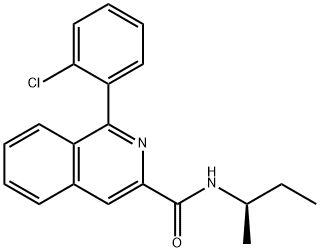
|
| DC66462 | FAP-IN-2 Featured |
FAP-IN-2 is a derivative of 99mTc-labeled isonitrile-containing fibroblast activation protein (FAPI) inhibitor. FAP-IN-2 can be used for tumor imaging. FAP-IN-2 has good stability, high uptake and good retention in the tumor site of mouse model.
More description
|
.gif)
|
| DC75325 | PSMA-617 TFA Featured |
PSMA-617, also know as vipivotide tetraxetan, is a ligand used to make 177Lu-PSMA-617, which is a radioactive molecule to fight cancer. PSMA617 possesses a small peptide, which was designed to target prostate-specific membrane antigen (PSMA). PSMA617 demonstrates high radiolytic stability for at least 72 h. PSMA617 has high inhibition potency (equilibrium dissociation constant Ki=2.34±2.94 nM on LNCaP; Ki=0.37±0.21 nM enzymatically determined). 177 Lu-PSMA-617 offers a potential additional life-prolonging treatment option for men with mCRPC.
More description
|
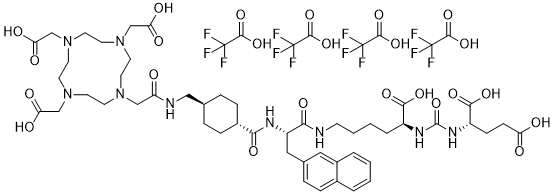
|
| DC32562 | PSMA617-TCMC TFA |
PSMA617-TCMC is a derivative of PSMA-617 with structure modification, in which the caroboxy groups in DOTA ring is replaced by TCMC macrocycle. PSMA-617 is a ligand used to make 177Lu-PSMA-617, which is a radioactive molecule to fight cancer,. PSMA-617 originally was developed at the German Cancer Research Center and the Heidelberg University Hospital. ABX held the exclusive license to bring the treatment, which targets prostate-specific membrane antigen (PSMA), through early clinical development.
More description
|
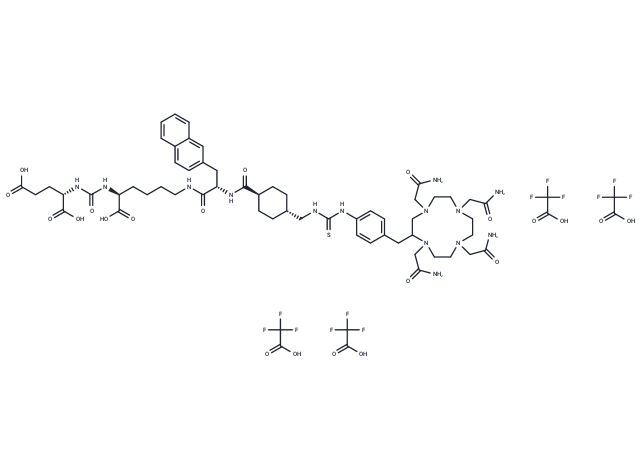
|
| DC65513 | HYNIC-FAPI-04 Featured |
HYNIC-FAPI-04 is a useful ligand for making [99mTc]Tc-HYNIC-FAPI-04. In vitro experiments, the results indicated that [99mTc]Tc-HYNIC-FAPI-04 showed binding properties, and inhibited the migration of tumor cells. The [99mTc]Tc-HYNIC-FAPI will be a promising SPECT/CT imaging probe.
More description
|
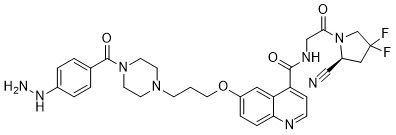
|
| DC67548 | NOP-1A Featured |
NOP-1A standard. 11C-NOP-1A is a new radioligand for thenociceptin/orphanin FQ peptide (NOP) receptor, with high affinity (Ki, 0.15 nM) and appropriate lipophilicity (measured logD, 3.4) for PET brain imaging. 11C-NOP-1A is the the first successful radioligand to image NOP receptors in rat and monkey brain. 11C-NOP-1A is a selective antagonist at the NOP receptor and has high affinity and appropriate lipophilicity for blood–brain barrier permeability. 11C-NOP-1A imaging in rhesus monkeys showed high brain uptake and a large receptor-specific signal and could be quantified with the gold standard method of compartmental modeling. In humans 1C-NOP-1A reliably quantified NOP receptors in human brain both in large brain regions and at a voxelwise level using parametric imaging. The radiation absorbed dose in humans was similar to that observed with other 11C-labeled ligands and would allow multiple scans of a single subject. Thus, 11C-NOP-1A is a promising radioligand for reliably quantifying NOP receptors in human brain.
More description
|
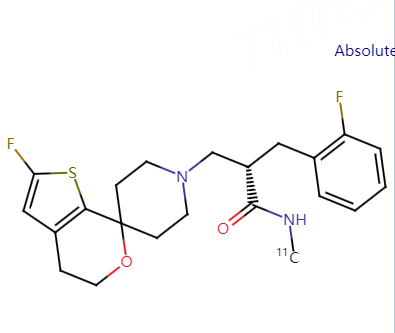
|
| DC67547 | NOP-1A Precursor Featured |
The Precursor of NOP-1A. (11)C-NOP-1A is a useful radioligand for quantifying NOP receptors in the monkey brain, and its radiation dose is similar to that of other (11)C-labeled ligands for neuroreceptors.
More description
|
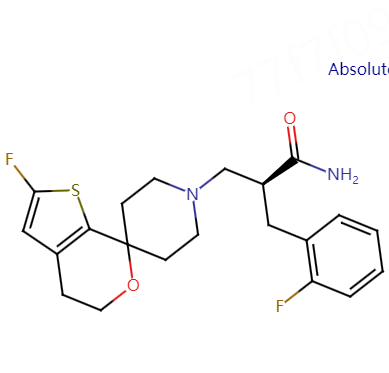
|
| DC46245 | FAPI-34 Featured |
FAPI-34 is a fibroblast-activating protein (FAP) inhibitor with favorable pharmacokinetic and biochemical properties. (patent WO2019154886A1).
More description
|
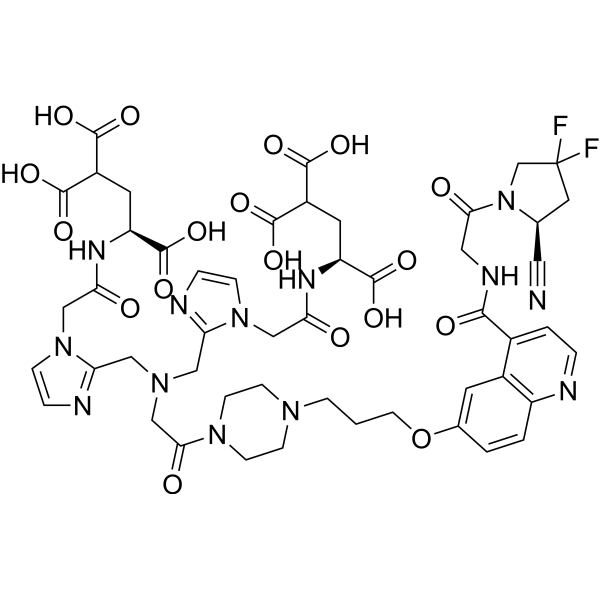
|
| DC65514 | NOTA-FAPI-46 Featured |
NOTA-FAPI-46 is an analogue of FAPI-46 (MedKoo Cat#207189). NOTA-FAPI-46 is useful in the diagnosis or treatment of a disease characterized by overexpression of fibroblast activation protein (FAP). NOTA-FAPI-46 can be used as a PET tracer for detection of diseases or disorders related to fibroblast activation protein.
More description
|
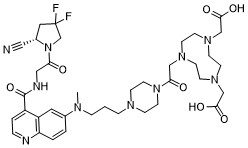
|
| DC60790 | DesMEM AZD4694 Featured |
DesMEM AZD4694(AZD4694 Precursor 1)is the precursor of [18F] AZD4694 for the synthesis of [18F] AZD4694, an amyloid-β imaging ligand with high affinity for amyloid-β plaques.
More description
|
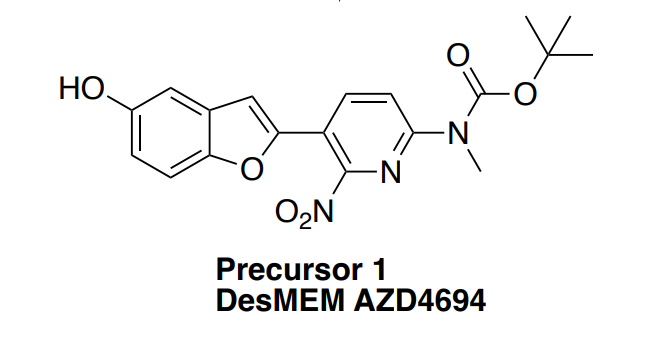
|
| DC67437 | PI-2620 precursor Featured |
PI-2620 precursor is the precursor of PI2620. 18F-PI-2620 is a PET tracer with high binding affinity for aggregated tau, a key pathologic feature of Alzheimer disease (AD) and other neurodegenerative disorders.
More description
|

|
| DC60818 | mono-Boc-Br MK-6240 Precursor Featured |
mono-Boc-Br MK-6240 Precursor is the precusor of MK-6240.. (18)F]-MK-6240 is a tau positron emission tomography (PET) tracer for neurofibrillary tangles (NFTs), exhibiting high specificity and selectivity for binding to NFTs .
More description
|

|
| DC40358 | MK-6240 Precursor Featured |
MK-6240 Precursor (6e) serves as a key intermediate in the synthesis of **[18F]-MK-6240**, a highly selective tau-targeting PET imaging agent. The radiolabeled compound, **[18F]-MK-6240**, is specifically designed for detecting neurofibrillary tangles (NFTs)—a hallmark pathology of Alzheimer’s disease and other tauopathies.
More description
|

|
| DC67414 | AV1451 precursor |

|
|
| DC40273 | AV-105 Featured |
AV-105 is a tosylate precursor compound derived from Florbetapir (18F), a radiolabeled styrylpyridine derivative referenced in patent WO2010078370A1 (Example 1.5). This precursor plays a crucial role in the synthesis of 18F-radiolabeled imaging agents, particularly for positron emission tomography (PET) applications.
More description
|

|
| DC46535 | THK-5475(THK 5475) Featured |
THK-5475(THK5475) is a precursor of THK-5470, a monoamine oxidase-B(MAO-B) imaging probe, could be used for neurological diseases study (from patent EP2019-846498).
More description
|

|
| DC66463 | FAPI-46-NOTA Featured |
NOTA-FAPI-46 is an analogue of FAPI-46 (MedKoo Cat#207189). NOTA-FAPI-46 is useful in the diagnosis or treatment of a disease characterized by overexpression of fibroblast activation protein (FAP). NOTA-FAPI-46 can be used as a PET tracer for detection of diseases or disorders related to fibroblast activation protein.
More description
|

|
| DC66461 | SH-FAPI-4 Featured |
SH-FAPI-4 is a specific fibroblast activation protein inhibitor (FAPI) compound that belongs to the FAPI family of molecules. SH-FAPI-4 is expected to selectively accumulate in FAP-positive tumors and disrupt the functions of cancer-associated fibroblasts (CAFs) within the tumor microenvironment. By inhibiting FAP activity, this compound aims to potentially slow tumor growth, enhance the efficacy of other cancer treatments, and modulate the tumor microenvironment.
More description
|

|
| DC12287 | delta-Valerobetaine Featured |
Delta-Valerobetaine is a precursor of trimethylamine N-oxide (TMAO).
More description
|

|
| DC65338 | Pentixafor(CPCR4-2) Featured |
Pentixafor is a synthetic, cyclic pentapeptide analog of stromal cell-derived factor-1 (SDF-1 or CXCL12), which is the natural ligand for the C-X-C chemokine receptor type 4 (CXCR4). CXCR4 is a chemokine receptor that plays a critical role in tumor growth, progression, invasiveness, and metastasis. Pentixafor is designed to target CXCR4, which is overexpressed in various cancers and is associated with poor differentiation and aggressive disease.
More description
|
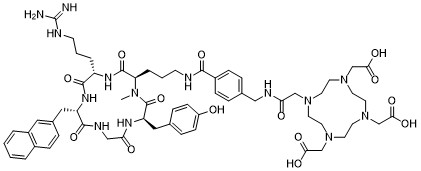
|
| DC40061 | DOTATATE Featured |
DOTATATE is a powerful tool in nuclear medicine, enabling the diagnosis and treatment of somatostatin receptor-positive tumors, particularly neuroendocrine tumors. When labeled with radionuclides like Ga-68 or Lu-177, it provides highly sensitive imaging and targeted therapy, making it a cornerstone in the management of these cancers. Its theragnostic potential allows for personalized treatment strategies, improving patient outcomes.
More description
|

|
| DC66469 | DOTA-NOC Featured |
DOTA-NOC (DOTA-Nal3-octreotide) is a high-affinity ligand of somatostatin receptor subtypes 2, 3 and 5. DOTA-NOC can be used for labeling with various radiometals, and development of radiopeptide imaging.
More description
|

|
| DC67285 | DOTA-Octreotide Featured |

|
|
| DC74649 | NOTA-TATE Featured |

|
|
| DC67284 | NOTA-NOC Featured |

|
|
| DC50044 | Edotreotide Featured |
Edotreotide is a synthetic somatostatin analogue that is used in nuclear medicine for the diagnosis and research of certain types of cancers, particularly neuroendocrine tumors (NETs). Somatostatin is a peptide hormone that inhibits the release of several other hormones, and many neuroendocrine tumors overexpress somatostatin receptors (SSTRs), making them ideal targets for somatostatin analogues like edotreotide.
More description
|

|
| DC66468 | NOTA-octreotide Featured |
NOTA-octreotide is a ligand for making [18F]AlF-NOTA-octreotide, which is a PET/CT imaging agent for somatostatin receptor imaging in neuroendocrine tumor patients
More description
|

|
| DC65339 | HBED-CC-tris(tBu) ester Featured |

|
|
| DC66467 | F-PSMA 1007 Featured |

|
|
| DC60103 | PSMA11 Featured |
PSMA-11 is a critical tool in nuclear medicine, enabling the synthesis of Ga-68-PSMA-11 for PET imaging of PSMA-expressing tumors. Its high specificity for PSMA, combined with the favorable properties of Ga-68, makes it a valuable diagnostic agent in the management of prostate cancer and potentially other malignancies.
More description
|

|